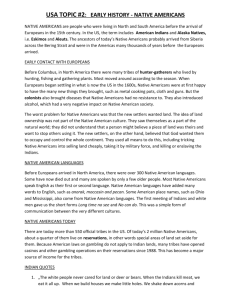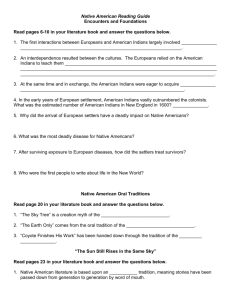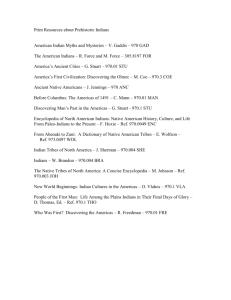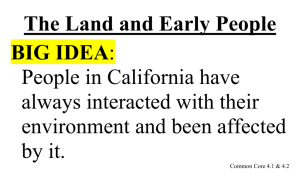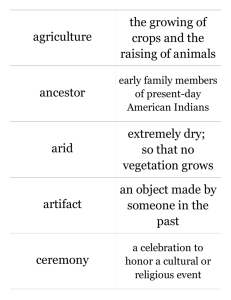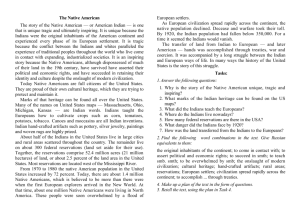Native American Heritage Days Press Release
advertisement
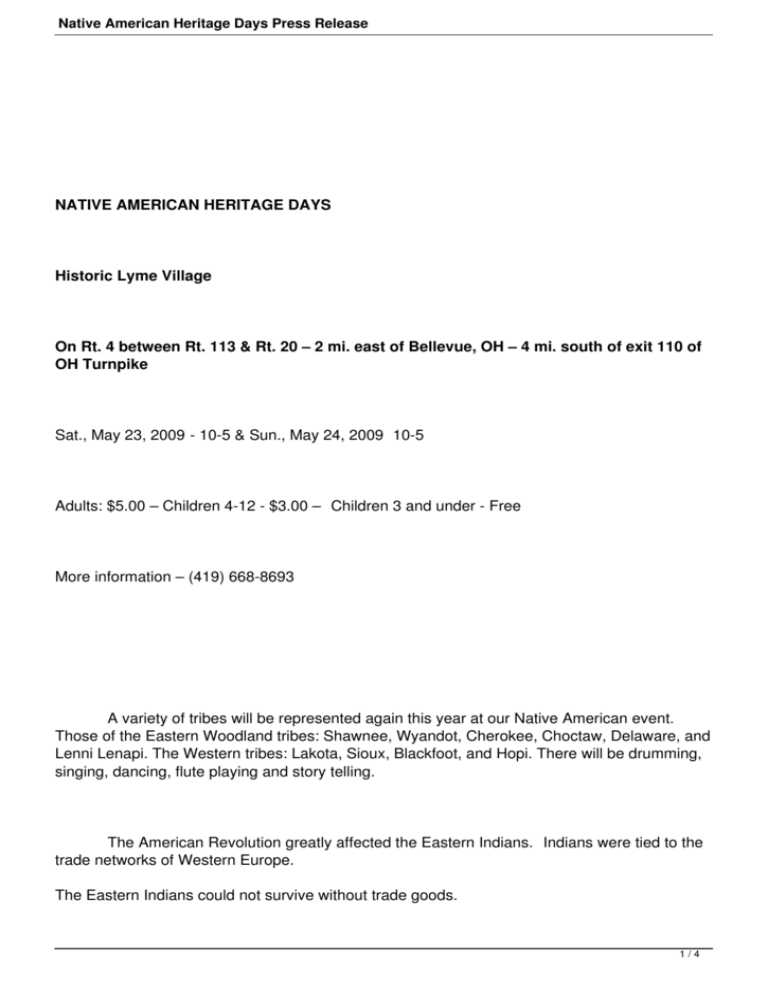
Native American Heritage Days Press Release NATIVE AMERICAN HERITAGE DAYS Historic Lyme Village On Rt. 4 between Rt. 113 & Rt. 20 – 2 mi. east of Bellevue, OH – 4 mi. south of exit 110 of OH Turnpike Sat., May 23, 2009 - 10-5 & Sun., May 24, 2009 10-5 Adults: $5.00 – Children 4-12 - $3.00 – Children 3 and under - Free More information – (419) 668-8693 A variety of tribes will be represented again this year at our Native American event. Those of the Eastern Woodland tribes: Shawnee, Wyandot, Cherokee, Choctaw, Delaware, and Lenni Lenapi. The Western tribes: Lakota, Sioux, Blackfoot, and Hopi. There will be drumming, singing, dancing, flute playing and story telling. The American Revolution greatly affected the Eastern Indians. Indians were tied to the trade networks of Western Europe. The Eastern Indians could not survive without trade goods. 1/4 Native American Heritage Days Press Release They traded for cloth, guns and ammunition, and alcohol, but wanted metal kettles, frying pans, pewter plates and cups, combs, mirrors, etc. In exchange, they taught Europeans how to plant corn, squash, and pumpkins, to prepare animal skins for clothing, and to build canoes. After the Great Awakening of the 1730s and 1740s missionaries entered Indian country and competed for souls, causing factions among the tribes. Indians donned European clothing but maintained traditional hairstyles, slit ears and facial tattoos. Basket making and woodcarving were stimulated by European demand. European rum demoralized and took many Indian lives. Choctaw and Cherokee chiefs were generally powerless to halt social chaos caused by drunkenness and the aggressive behavior it caused in the warriors. Intermarriage between Europeans and Indians produced “new peoples” of mixed ancestry and caused racial conflicts. Trade jargons emerged. Indians adopted Spanish, English, Gaelic, Dutch, French, and African words. Europeans incorporated Algonquin, Iroquoian, and Muskalogeon. For thousands of Indians, the “new world” became a graveyard; diseases such as smallpox, plague, measles, flu, pneumonia, tuberculosis, diphtheria, yellow fever killed them at unbelievable rates. Indians were caught up in wars of empire. The Americans and the British taught them that they could be bought and sold, and both countries sought their allegiance. Indians played the Americans, the British, the Spanish and the French against each other to insure their neutrality and survival, while keeping up the flow of trade goods. 2/4 Native American Heritage Days Press Release Europeans adopted Indian clothes, canoes, some foods and some hunting and fishing practices. Despite the adoption of commercial hunting and the addition of fruit, potatoes, cattle, pigs and domestic ducks and chickens to their diet, the sacred “three sisters” of the Iroquois – corn, beans and squash – remained the staff of life for many woodland Indians. Trader James Adair said corn was an Indian people’s “chief produce and main dependence.” Corn was also at the core of many tribes’ spiritual well-being: Cherokees recalled the mythical female origins of their agriculture in the story of Selu, a woman whose name means “corn.” Annual Green Corn Ceremonies insured ritual purification of the community. Like the buffalo in the Plains Indian culture and economy, corn for eastern woodland Indians was the basis of life and prosperity. It was also an Achilles’ heel, providing enemy armies with a target that could be burned time and time again with devastating effect. The language of American Indians has provided us with a rich legacy in our current vocabulary: moose, raccoon, skunk, opossum, squaw, wigwam, totem, papoose, moccasin, and tomahawk. Rivers: Susquehanna, Potomac, Maumee, Cuyahoga, Tuscarawas, Monongahela, Delaware, Olantangy, and Miami. Ohio Counties: Seneca, Huron, Ottawa, Wyandot, Sandusky, Muskingum, & Erie. Ohio Towns: Wapakoneta, Logan, Mingo, Osceola, Tymochtee, Chillicothe, Chippewa–On–The-Lake, and 3/4 Native American Heritage Days Press Release Shawnee. May we come to appreciate more and more the rich heritage of the Native Indians, our first Americans. , -- Most of these excerpts were taken from the book The American Revolution in Indian Country written by Colin G. Calloway. The remainder came from Melvin Braggs’s The Adventure of English. 4/4
